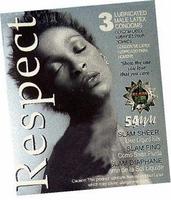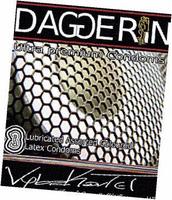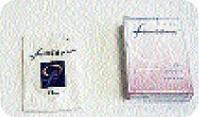
December 1 was recognised as Worlds AIDS Day and we were again asked to pause and reflect on the severe impact that HIV/AIDS has had on humanity, especially in developing countries.
We were also reminded that the three pillars for HIV prevention were abstinence, sexual fidelity and regular condom use. This week, we will reflect on this ubiquitous device called the condom.
A condom is a device used during sexual intercourse. It is put on a man's erect penis or inserted in the vagina and physically blocks ejaculated semen from entering the body of a sexual partner. It is also known as rubbers, safes, protection, boots and jimmies.
History
Condoms have, in some form or the other, been used for at least 400 years. Since the 19th century, they have been one of the most popular methods of contraception in the world.
The first rubber condom was produced in 1855. Latex, rubber suspended in water, was invented in 1920. The first polyurethane condom was introduced in the 1990s, and the first custom sized-to-fit condom, called They Fit, was introduced in 2003.
When do you use condoms?

Patrons attending the Ministry of Education's Expo on 'National Sexuality and Reproductive Health' place a condom on a model penis at the National Arena in February. Ignorance of how to properly use condoms is an obstacle to some sexual encounters.
Condoms are recommended for the prevention of pregnancy and sexually transmitted infections (STIs). They have been shown to be effective in reducing infection rates in both men and women. The condom, when used properly, prevents the transmission of HIV. According to a 2000 report by the National Institutes of Health, correct and consistent use of latex condoms reduces the risk of HIV/AIDS transmission by approximately 85 per cent.
They can be used with a local anaesthetic to treat premature ejaculation and since they compress the outer veins of the penis may be helpful for men who have difficulty maintaining an erection.
What are they made of?
Condoms are usually made from latex, but some are made from other materials such as polyurethane, lamb intestine and polyisoprene.
Latex condoms have good elastic properties and may be stretched in excess of 800 per cent before breaking, but they can cause latex allergy and have to be stored and packaged carefully to avoid degradation of the latex.
Polyurethane condoms tend to be the same width and thickness as latex condoms but are better than latex in a number of ways. They conduct heat better; are not as sensitive to temperature and ultraviolet light and thus have less rigid storage requirements and a longer shelf life; can be used with oil-based lubricants, are less allergenic and do not have an odour.
Polyisoprene condoms are made from a synthetic version of natural rubber latex but are more expensive. Polyisoprene has advantages: it is softer than latex and more elastic than polyurethane condoms, and does not contain the protein which is responsible for latex allergies.
Lambskin condoms are made from lamb intestines. Compared to synthetic condoms, they have a greater ability to transmit body warmth and tactile sensation, and cause fewer allergies. However, there is an increased risk of transmitting STIs compared to latex because of pores in the material.
Types
Condoms are made in different lengths, widths and shapes. Most have a reservoir tip but some have a plain tip. They may have straight sides, fit snugly to the penis or flared (wider over the head of the penis), coloured or tinted, transparent or opaque, dry, powdered or lubricated with either a silicon-based or water-based lubricant. Some use a spermicide such as nonoxynol-9.
When do you use a condom?
You need to use a new condom every time you have sexual intercourse. Never use the same condom twice. Put the condom on after the penis is erect and before any contact is made between the penis and any part of your partner's body.
In this era of HIV, safe sex is the only way, aside from abstinence, to significantly minimise your risk of contracting STIs and HIV.
Dr Alverston Bailey is a medical doctor and immediate past president of the Medical Association of Jamaica. Email comments and questions to editor@gleanerjm.com or fax 922-6223.


How do you use a condom?
1. Open the condom package at one corner, being careful not to tear the condom with your fingernails. Make sure the package and condom appear to be in good condition, and check if there is an expiration date.
2. Pinch the air out of the condom tip with one hand and unroll the condom over the penis with the other hand. Roll the condom all the way down to the base of the penis, and smooth out any air bubbles, as air bubbles can cause a condom to break.
3. Withdraw before the penis softens, and hold the condom against the base of the penis while you pull out, so that the semen doesn't spill. Dispose of the condom properly. Please note that 'double bagging', that is, using two condoms at once, increases the risk of condom failure.
Disadvantages of condoms


Some men are unable to maintain an erection after putting on a condom.
The friction caused by the condom may reduce female stimulation, which can make sex less enjoyable or uncomfortable.
The man must withdraw his penis immediately after ejaculation.
Pre-planning is generally required - in other words, you must have a condom before sex is contemplated.
One to two per cent of women and men are allergic to latex.
Nonoxynol-9, the spermicide used in some condoms, is a chemical to which some people are allergic. The resultant irritation will make you more vulnerable to HIV infection.
The condom may slip off the penis after ejaculation.
Latex degradation can occur due to improper storage, exposure to oil-based or petroleum-based products or age.